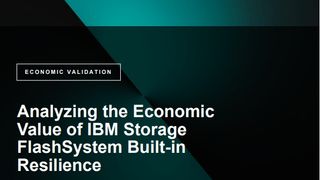Gartner outlines five-phase approach to help businesses survive the coronavirus pandemic
Organisations urged to identify key customers and identify uncertainties

Gartner has taken the matter of guiding organisations during the coronavirus pandemic lockdown into its own hands, introducing a five-phase approach to strengthen the resilience of current business models.
The approach aims to make organisations aware of the possibility that their own business model could be the factor threatening the continuity of their operations during external events, an example of such being the current COVID-19 outbreak.
Gartner has set out the following five phases that each organisation should be sticking to as part of their lockdown plans:
- Phase 1: Define the business model
- Phase 2: Identify uncertainties
- Phase 3: Assess the impact
- Phase 4: Design changes
- Phase 5: Execute changes
The first phase is to “define the business model” by urging businesses to shift their primary focus onto their key clients, who are considered vital “to their continuity of operations”.
Companies can then choose to determine their current business models: “their customers, value propositions, capabilities and financial models”. Gartner also encourages CIOs to actively take part in modifying current business models.
Gartner’s second phase is to “identify uncertainties” and the risks that they could pose to any business model components.
“CIOs should participate in, or coordinate, the brainstorming sessions to identify any uncertainties from COVID-19 outbreaks,” said Daniel Sun, research vice president at Gartner. “CIOs can share some of IT’s potential uncertainties and threats, such as issues with IT infrastructure, applications and software systems.”
Get the ITPro. daily newsletter
Receive our latest news, industry updates, featured resources and more. Sign up today to receive our FREE report on AI cyber crime & security - newly updated for 2024.
Phase three is all about evaluating the impact of these identified uncertainties, and CIOs are encouraged to “provide the potential impacts from an IT perspective”.
The fourth phase calls for developing provisional strategies which would be able to deal with these uncertainties, regardless of their feasibility. CIOs and IT are encouraged to use “digital technologies and capabilities" to facilitate these strategies.

How to deploy a modern CMS quickly
This guide will help you choose, deploy and optimise a CMS that provides better results for your customers and your business
The final, fifth phase is to “execute changes”. These should be based on the decisions made by senior leadership teams, who would choose the strategies that seem most convincing to implement, judging by “both economic calculations and intuition”.
“Once senior leadership teams select the business and IT change initiatives, CIOs should apply an agile approach in executing the initiatives. For example, they can form an agile (product) team of multidisciplinary team members, enabling the alignment between business and IT and ensuring delivery speed and quality,” said Sun. “In crises such as the COVID-19 outbreak, agility, speed and quality are crucial for enabling the continuity of operations.”
Having only graduated from City University in 2019, Sabina has already demonstrated her abilities as a keen writer and effective journalist. Currently a content writer for Drapers, Sabina spent a number of years writing for ITPro, specialising in networking and telecommunications, as well as charting the efforts of technology companies to improve their inclusion and diversity strategies, a topic close to her heart.
Sabina has also held a number of editorial roles at Harper's Bazaar, Cube Collective, and HighClouds.





